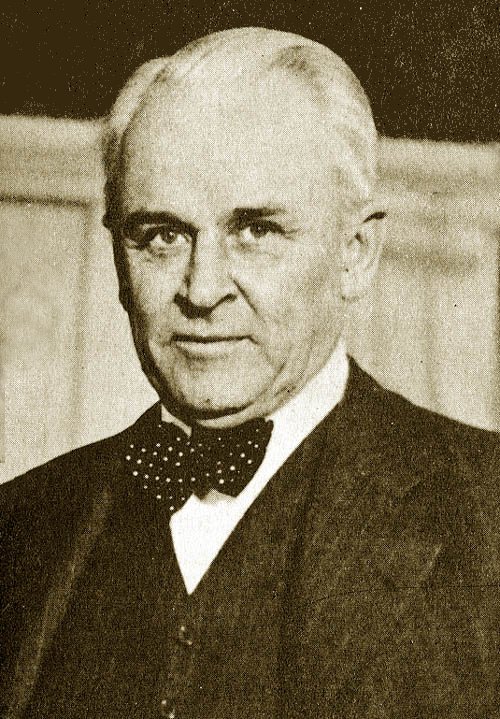Robert Millikan
Today, the man who didn't want to be a physicist. The University of Houston's College of Engineering presents this series about the machines that make our civilization run, and the people whose ingenuity created them.
Robert A. Millikan never meant to be a physicist. He was born in 1868 and raised in a small town in Iowa. He liked athletics and classics. His high-school physics course was a joke; and, when he went to Oberlin to study classics, his college physics wasn't much better. But fate intervened. As an upperclassman, he was asked to teach the college physics course. When he balked, he was told, "Anyone who can understand Greek can teach physics."
The year he graduated, 1891, was a depression year; so he kept on teaching physics at $600 a year. It was the only work he could find. While he was at it, someone on the Oberlin faculty submitted his name for a graduate assistantship in physics at Columbia. It came through with a $700 stipend. Millikan took it. The only doors that opened to him, seemed to open into physics.
When his fellowship ran out, a professor lent him money to study with people like Roentgen and Curie in Europe. Then, Albert A. Michelson, who'd co-discovered the constant velocity of light, got wind of him, and hired him at the University of Chicago.
The year 1906 found Millikan pushing forty and falling into a kind of academic dead end. He was still an assistant professor; he'd done little beyond some textbook writing; he was struggling to support his family, and he was up to his nose in administrative chores. His life was headed nowhere in particular.
But his education had connected him with the great revolution in physics that was then fully afoot. He'd been a sharp observer from the sidelines. Now he joined the revolution. He started doing some very sophisticated experiments, and two of them proved to be profoundly important.
In one, he found out how to evaluate the exact charge of an electron by measuring its effect on a tiny drop of oil. In the other he created means for making a direct measurement of Planck's constant, and for showing that it really was constant. Millikan slid one of the last bricks of early quantum mechanics into place, and he set the stage for modern quantum theory.
In 1921 Millikan went on to high technical and administrative posts at Cal Tech. During those years, he also represented the United States in the League of Nations. And his Planck's constant work won him the 1923 Nobel Prize in physics.
And yet he didn't unfurl his enormous abilities until he'd lived half of his long life. He didn't even appear to take physics seriously at first. How often do we hear the old canard, "If you haven't done something significant by the time you're 25, you never will." Well, we don't want to buy into that one.
But maybe he made better use of his early years than he seemed to. He prepared, not by looking for markers of success, but by questioning the subject itself. An intriguing case: Perhaps a moral fable lurks within Millikan's very odd story.
I'm John Lienhard, at the University of Houston, where we're interested in the way inventive minds work.
(Theme music)
M. Wilson, American Science and Invention, A Pictorial History. (New York: Bonanza Books, 1960): pp. 328-339.
Note added, March 29, 2021: A listener writes to point out another facet of Robert Millikan that has come to light. It is that he was a eugenicist, and an extreme racial supremacist to boot. As a result, Cal. Tech. has removed his name from one of their buildings, and written this unhappy fact into his campus memorial.
This is a greatly rewritten version of Episode 204.
